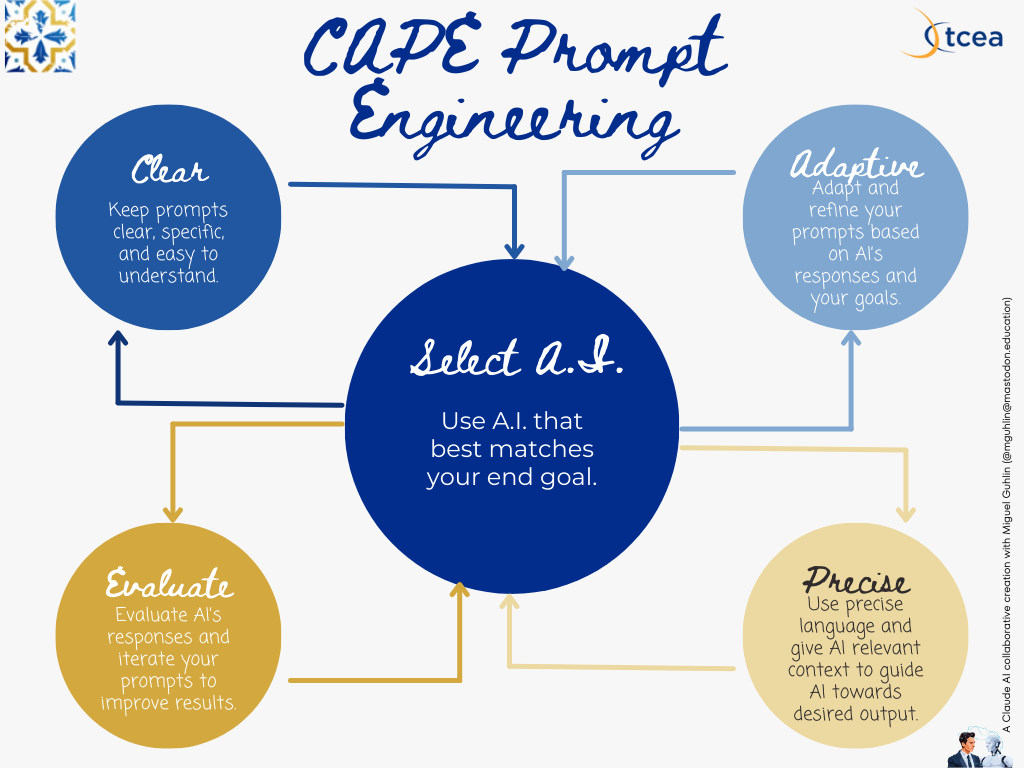Infographics
- Visible Learning MetaX database
- The IRIS Center
- What Works Clearinghouse
- Rand Corporation Research
- UNESCO 2023 GEM Report
- Definitions can be found online Visible Learning Meta X database
What's the Scientific Consensus on That? #EduSky
One of my favorite takeaways from Melanie Trecek-King’s ThinkingisPower.com website? Exploring what the scientific consensus is for something. Whenever there’s an discussion about whether something is valid or not, whether it really helps or not, I find myself wondering, “What the scientific consensus on…[topic goes here]?”
Not surprisingly, while some of the times I’ve asked that, my guess has been right or in the ballpark, there have been several other times when I was wrong.
This discussion came up at work earlier this year, so I cooked up this chart with the help of AI. What do you think?
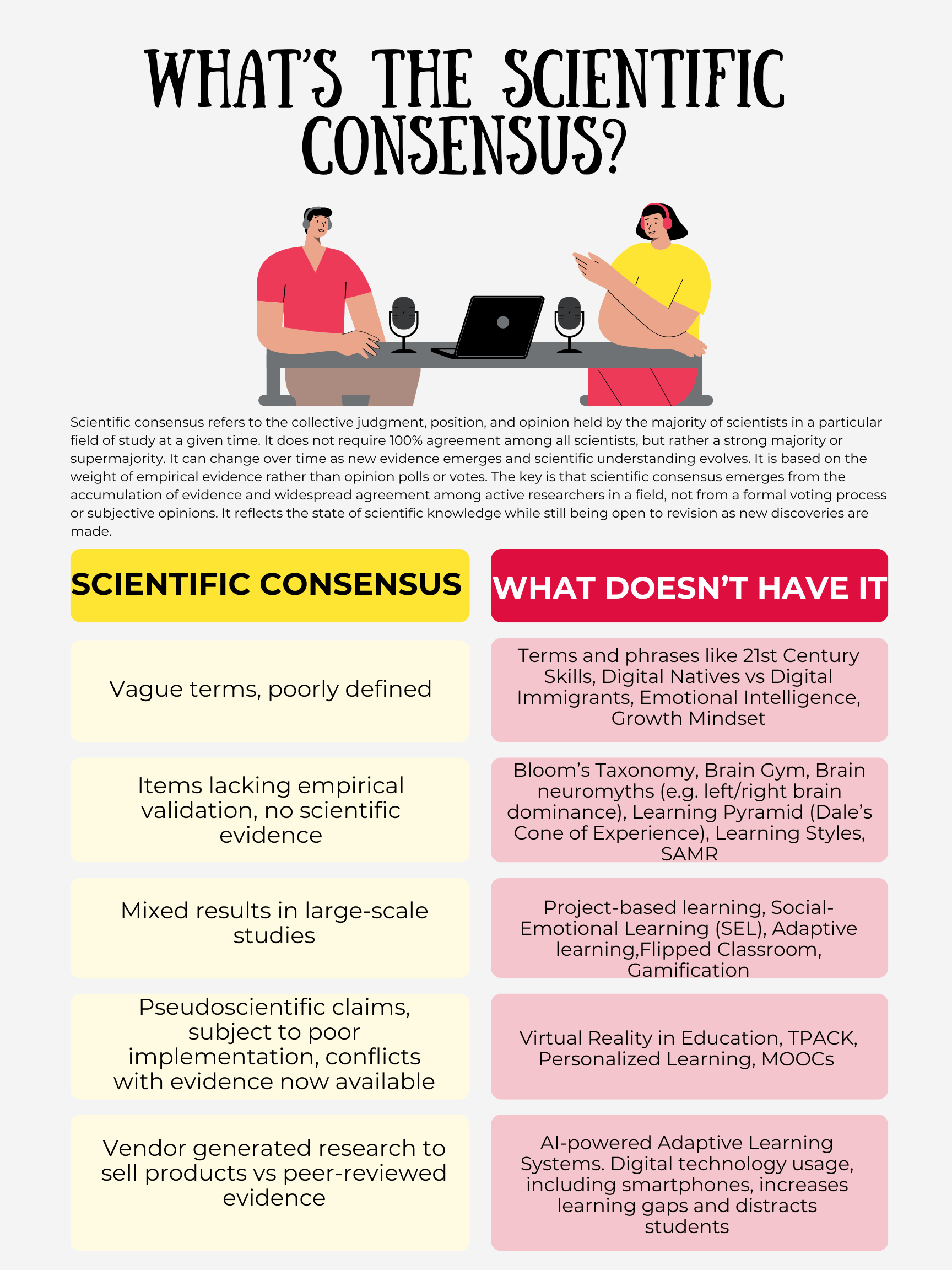
Scientific consensus refers to the collective judgment, position, and opinion held by the majority of scientists in a particular field of study at a given time. It does not require 100% agreement among all scientists, but rather a strong majority or supermajority. It can change over time as new evidence emerges and scientific understanding evolves. It is based on the weight of empirical evidence rather than opinion polls or votes. The key is that scientific consensus emerges from the accumulation of evidence and widespread agreement among active researchers in a field, not from a formal voting process or subjective opinions. It reflects the state of scientific knowledge while still being open to revision as new discoveries are made.
Stuff Lacking Scientific Consensus
Stuff Lacking Scientific Consensus
This table includes educational ideas and approaches that have gained popularity but lack strong scientific consensus. It’s important to note that some of these ideas, while not strongly supported by current evidence, may still offer valuable insights or practical applications in certain contexts. However, educators and policymakers should approach them critically and consider the available evidence when making decisions about implementation.
Sources of Educational Research
Make sure to research information at one of these sites before citing out-dated ideas, hypotheses, etc.
Instructional
Educational Technology
These concepts have gained attention in educational technology but still face various challenges in terms of scientific consensus, often due to implementation difficulties, mixed research results, or limited long-term studies on their effectiveness.
| Name of idea | Level of Scientific Consensus (Why it doesn’t have it) | Year proposed |
|---|---|---|
| Adaptive Learning | Moderate (Mixed results, implementation challenges) | 1950s |
| Connectivism | Low (Lack of empirical evidence, criticized as a learning theory) | 2005 |
| Digital Badges | Low (Limited research on long-term impact and motivation) | 2010s |
| Flipped Classroom | Moderate (Mixed results, implementation challenges) | 2000s |
| Gamification | Moderate (Mixed results, concerns about long-term effectiveness) | 2000s |
| Learning Analytics | Moderate (Privacy concerns, implementation challenges) | 2010s |
| MOOC (Massive Open Online Courses) | Low (High dropout rates, limited evidence of effectiveness) | 2008 |
| Personalized Learning | Moderate (Implementation challenges, definition issues) | 1960s |
| SAMR Model | Low (Lacks empirical research, oversimplifies technology integration) | 2006 |
| TPACK (Technological Pedagogical Content Knowledge) | Moderate (Measurement issues, implementation challenges) | 2006 |
| Virtual Reality in Education | Low (Limited long-term studies, cost and implementation issues) | 1990s |
Share Visual Literacy with Adobe Express
Adobe Express empowers educators to model visual literacy. This free tool offers powerful image editing capabilities. Learn how to use it to teach students about interpreting, creating, and using visual content for communication and learning. #EduSky #BookCreator #Adobe
See more
Encouraging visual literacy? #EduSky

How are you teaching students to interpret, create, and use visual content for communication and learning? In this blog entry, you will get some suggestions on how to accomplish that with Adobe Express.
Read more
Effective Learning Strategies You Can Use Right Now #EduSky

What effective learning strategies can you enhance with AI tools? Leverage AI to make you a more effective and efficient learner! Let’s take a look at how you learn. Then we’ll try to answer the question, “How can I use AI chatbots to improve my application of those effective learning strategies?”
Read more
Prompt Ideas
Some ideas for prompting:
Gathering New Knowledge
I am interested in learning more about [Insert Topic]. I am basing a lot of my new knowledge on [Insert Source (e.g., a book, article, course)]. Here’s what I already know about this topic: [Insert prior knowledge]. Could you generate questions that connect [Source] to what I already know, and create a personalized learning plan based on my interests? Could you also create a visual diagram (e.g., a mermaid diagram) that I can add to over time, connecting key ideas?
Thinking About Content
You are a critical thinking coach. Analyze my perspective on [topic], then play devil’s advocate to challenge my assumptions. Generate thought-provoking questions that prompt deeper reflection. Finally, explain my thought process back to me, highlighting areas for metacognitive improvement. Let me know when you are ready to question my assumptions in an interactive manner.
Maintaining Your Learning
You are a personalized learning assistant. Create a spaced repetition schedule for my study topics. Generate practice problems that interleave different subjects I’ve learned. Regularly quiz me on past material to test my recall. Adjust the schedule and problem difficulty based on my performance.
I want to add something to this that I read about recently and plan to try. It’s called Quadrant Note-Taking.. Stay tuned!
Another Prompt Engineering Acronym
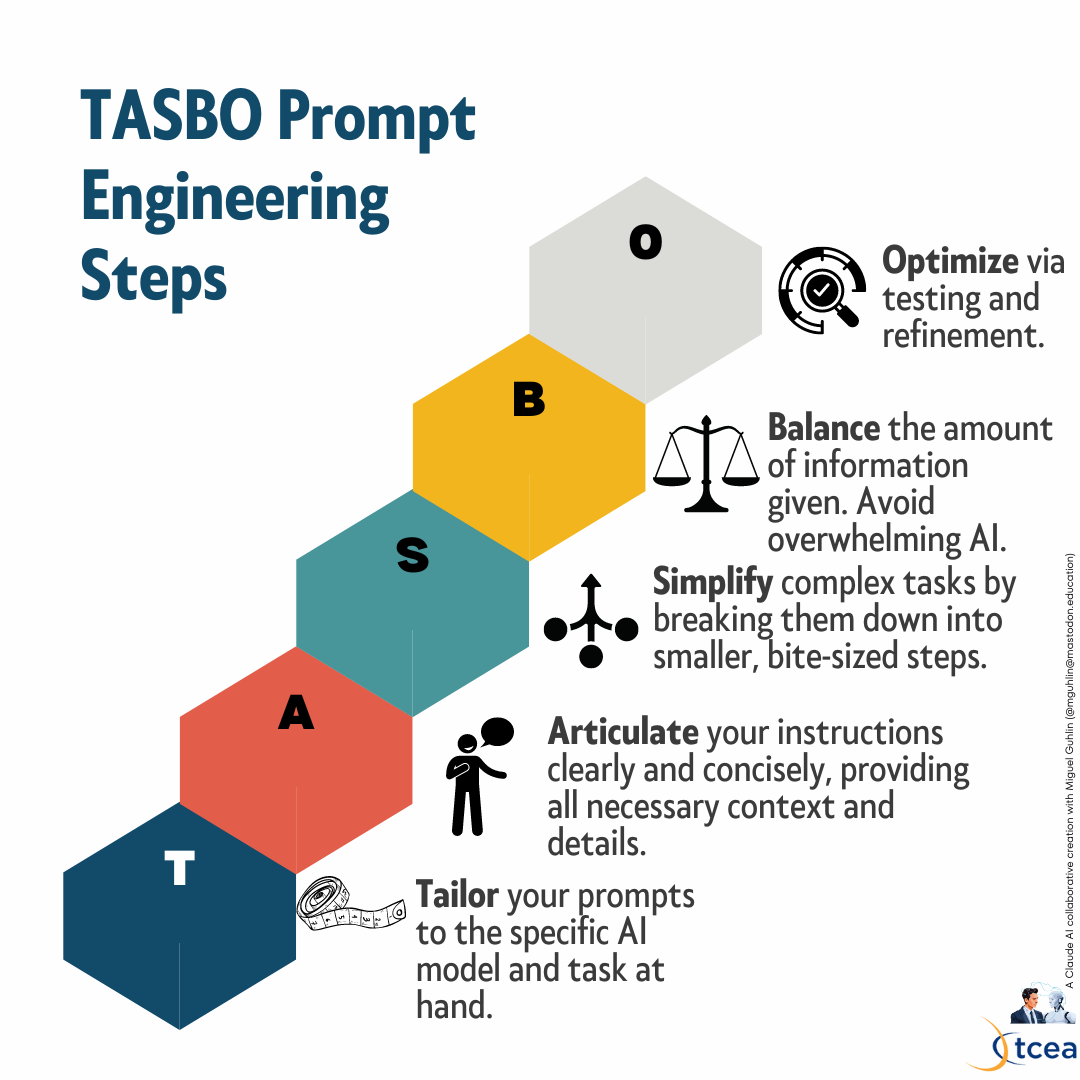
On Tuesday, June 18, I presented at the TASBO Deep Dive event. You can find my session resources online, along with my slide deck. The session description is:
AI transforms your work. Automate tasks, improve communication, and boost creativity. Unlock your potential with AI tools for unmatched productivity and inspiration. Join us to become a smarter, more creative professional!
Want to learn more about prompt engineering? Read more
Six Websites on Cells for Fun Science Learning #tcea #tceajmg

Teaching middle school science and looking for interactive resources about plant and/or animal cells? Explore these free websites. Ready to explore cells? This blog shows great websites that make science learning fun and simple and are perfect for classroom or home. And they’re all free to use! You already know these websites below will provide students with engaging, interactive activities. But don’t forget how much fun (and messy) creating their own 3D models can be. Have students build 3D models of plant and animals cells using materials like clay, candy, jello, etc. to represent different organelles. Of course, you can also use virtual world building apps like Minetest (free) or Microsoft’s Minecraft (paid).
Read more
Online Reading Programs and Digital Apps #tcea #tceajmg
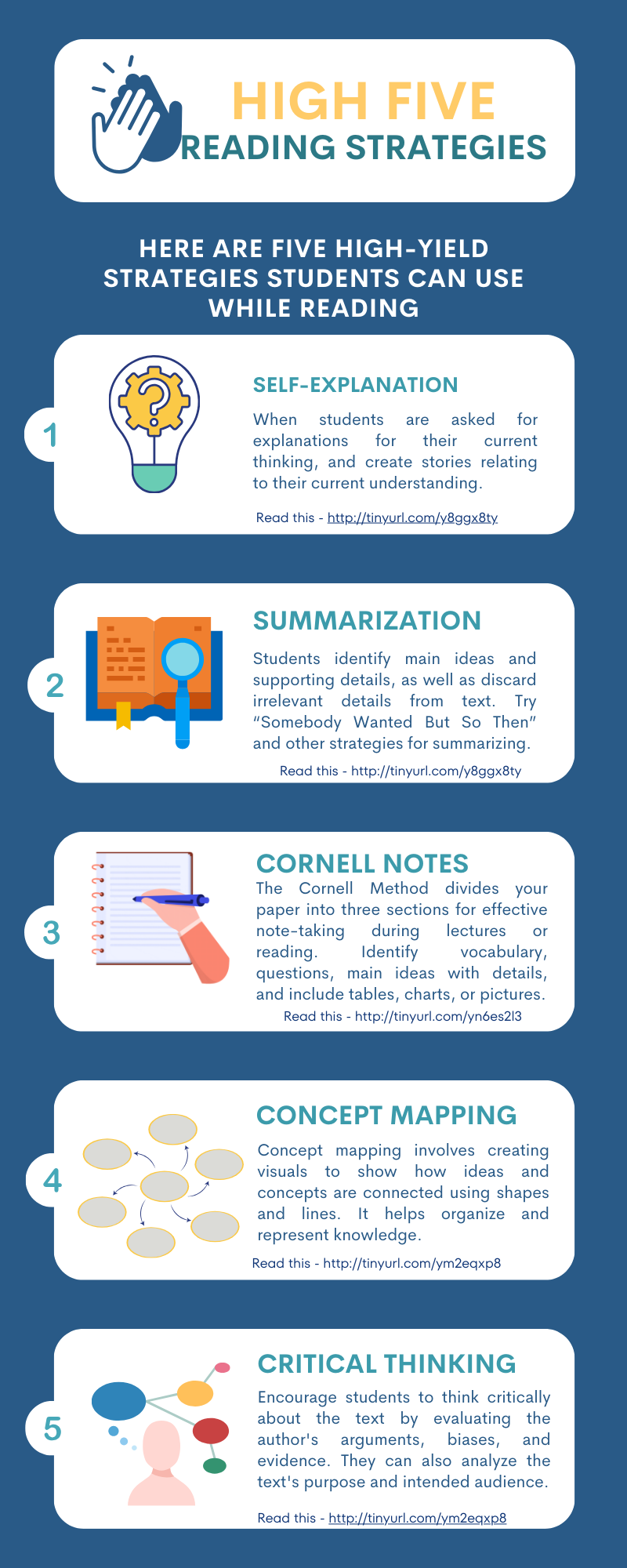
Looking for some ways to supplement your reading interventions? Here are a few AI-recommended solutions with reflections about each one. We’ll explore 21 supplemental online reading programs and a list of 6 iOS apps, including reading titles and content. Ready to dive in?
Read more
Evidence-Based Teaching #tcea #tceajmg
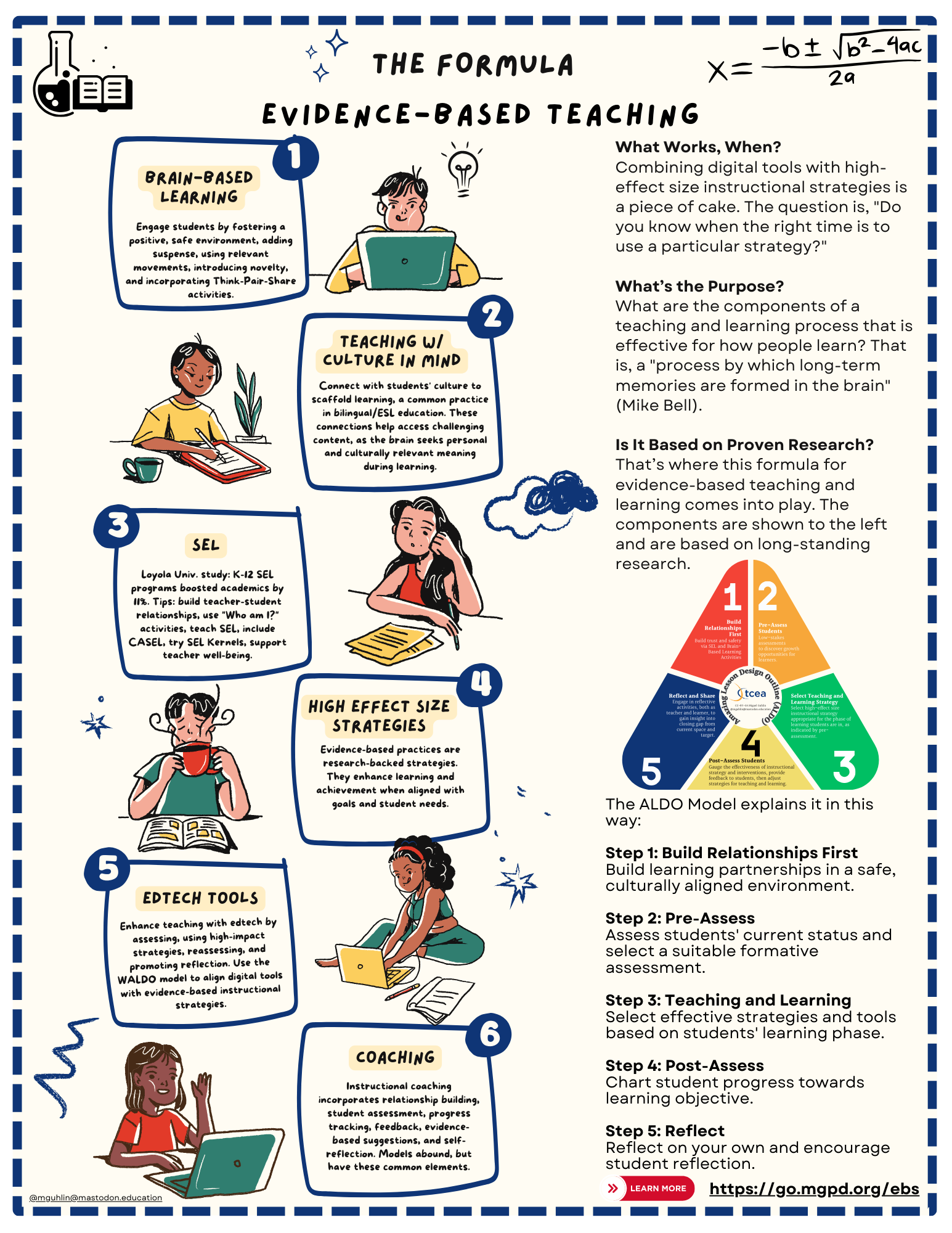
Image created by author.
The Evidence-Based Teaching online, self-paced course offers the opportunity to learn specific, evidence-based strategies you can use in your classroom. It also provides an overall framework for amazing lesson design that is evidence-based.
The purpose of this course is to provide you with the “magic formula” of lesson design that supports your efforts at teaching and learning in the K-12 and adult classroom. In addition to powerful, evidence-based instructional strategies, you will learn how to keep culture in mind when structuring learning opportunities.
The SOLO Taxonomy #tcea #tceajmg

Infographic created by author in Canva.
A taxonomy of learning can be helpful. It can provide a schema for understanding learning we participate in or facilitate for others. The SOLO Taxonomy has been around since I graduated from eighth grade. In spite of that, I never learned about John Biggs and Kevin Collis’ creation in 1982. It needs little introduction since heavyweights like Peter DeWitt and Pam Hook have spent some time explaining it. Yet, as I mentioned, it’s important to build one’s own theory of understanding. To do so, I have juxtaposed various explanations. These explanations are organized in a simple table.
Meet ALDO: The Amazing Lesson Design Outline #tcea #tceajmg
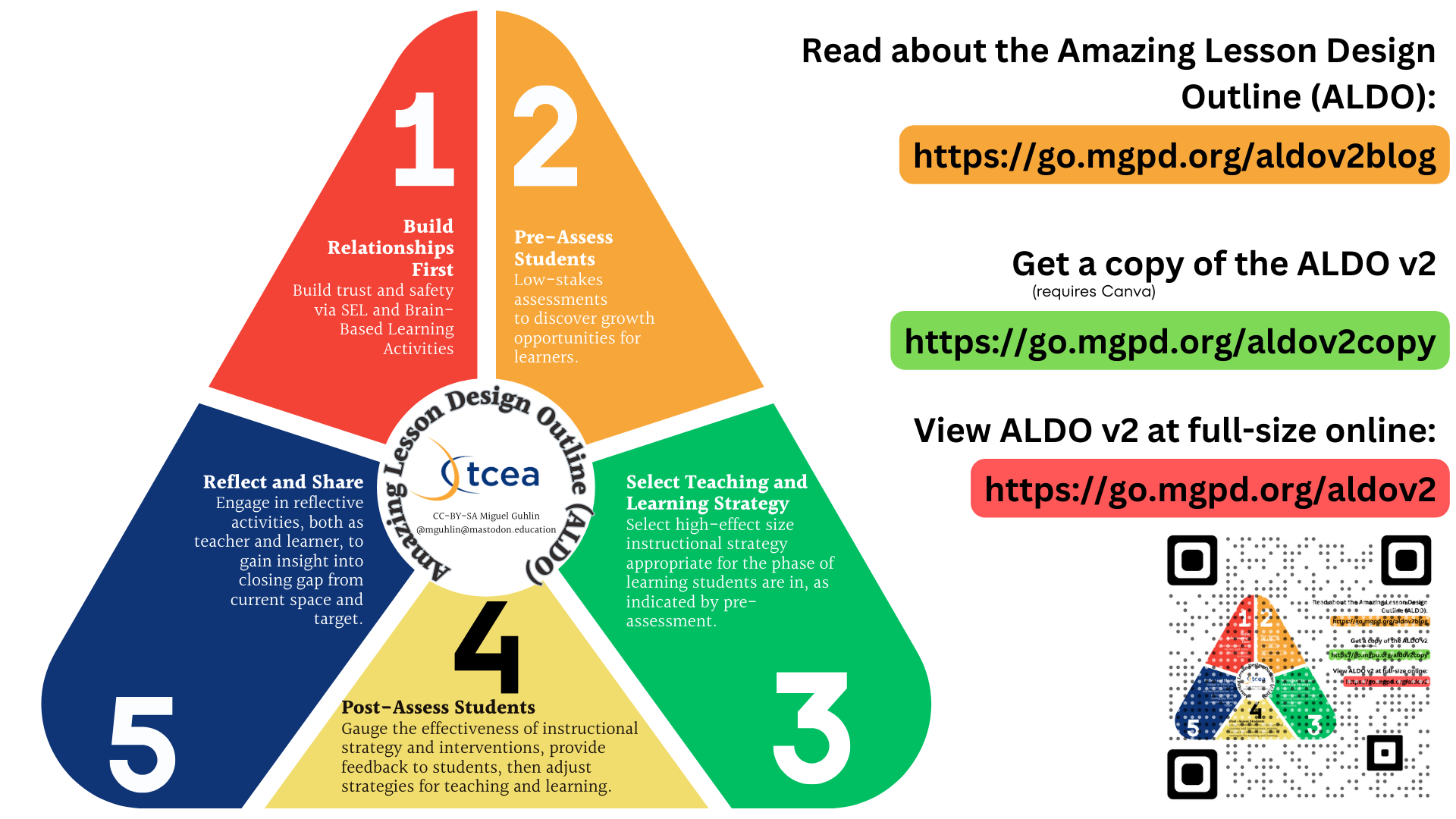
Images created by author.
Ever wish you had an easy-to-follow checklist when designing learning for students? I know I have…often. Some of my colleagues effortlessly design amazing lessons, but I have to plod through each point. But lesson design is something that is critical to ultimate success in the classroom for each student. That’s why I’d like to take a moment to share my latest version of the outline I use. At the end, you will find a custom GPT you can use to get an AI spin on ALDO.
More ALDO Goodness


Seven Ready-to-Use Story Bin Activities #STEM #tcea #tceajmg
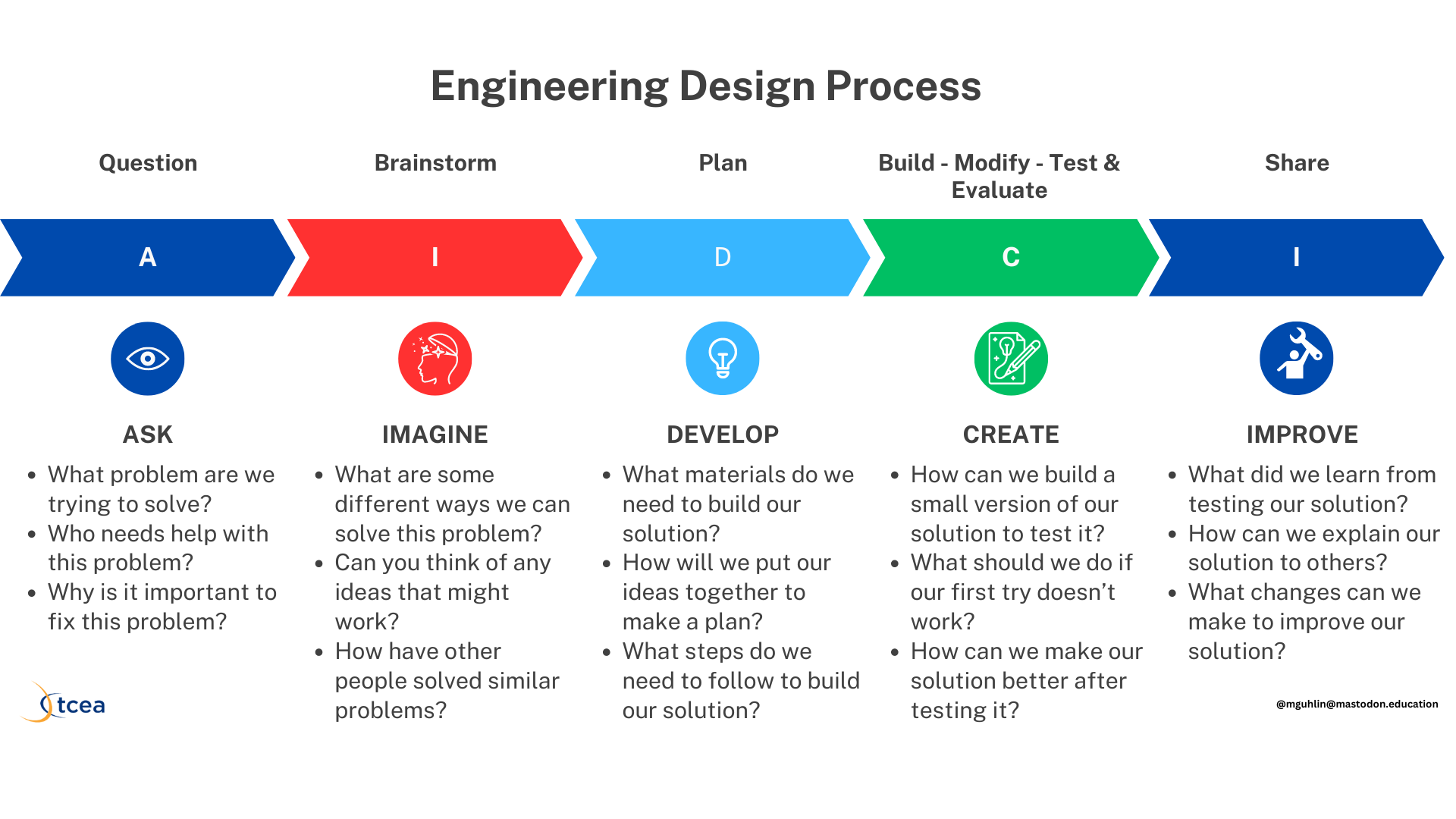
Embark on a journey of story-fueled engineering design and problem-solving with story bins. Explore this creative idea for young learners!
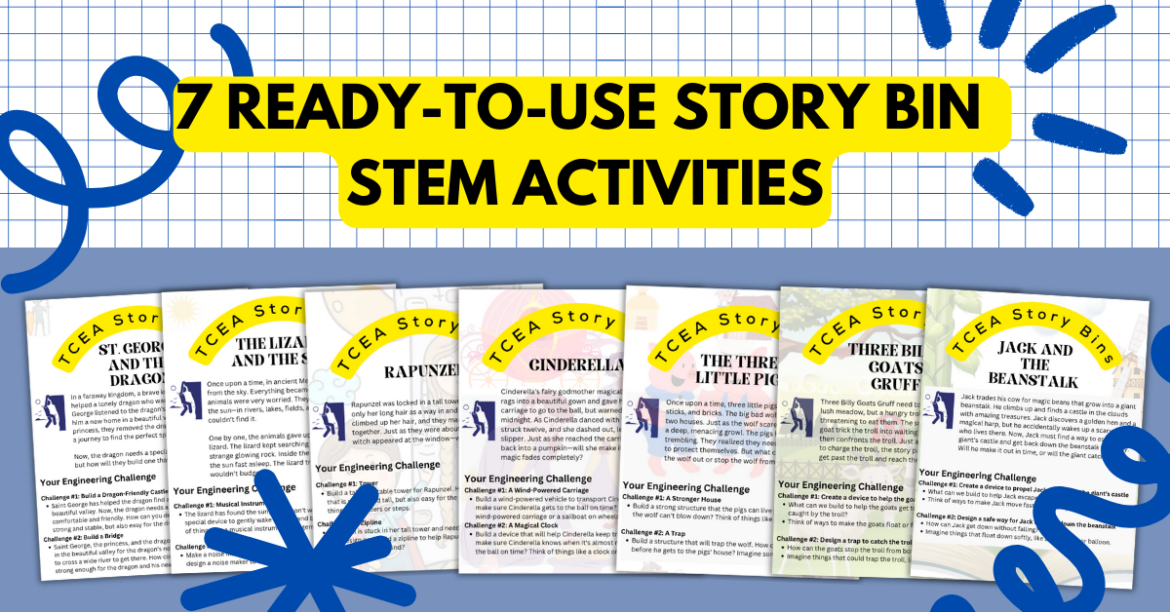
“Have you heard of STEM Bins?” Peggy Reimers said. “No, I haven’t,” I replied. In a moment, I’d fallen off the plank, submerged into a sea of learning. Like treasure chests filled with tools for creative imagineering, STEM Bins are fun. I like to think of them as Story Bins, because they turn stories into powerful learning opportunities. Let’s explore several practical ideas for elementary Story Bins.
Eduaide and MagicSchool: Compare Two Top #AI Tools for #Teachers #tcea #tceajmg
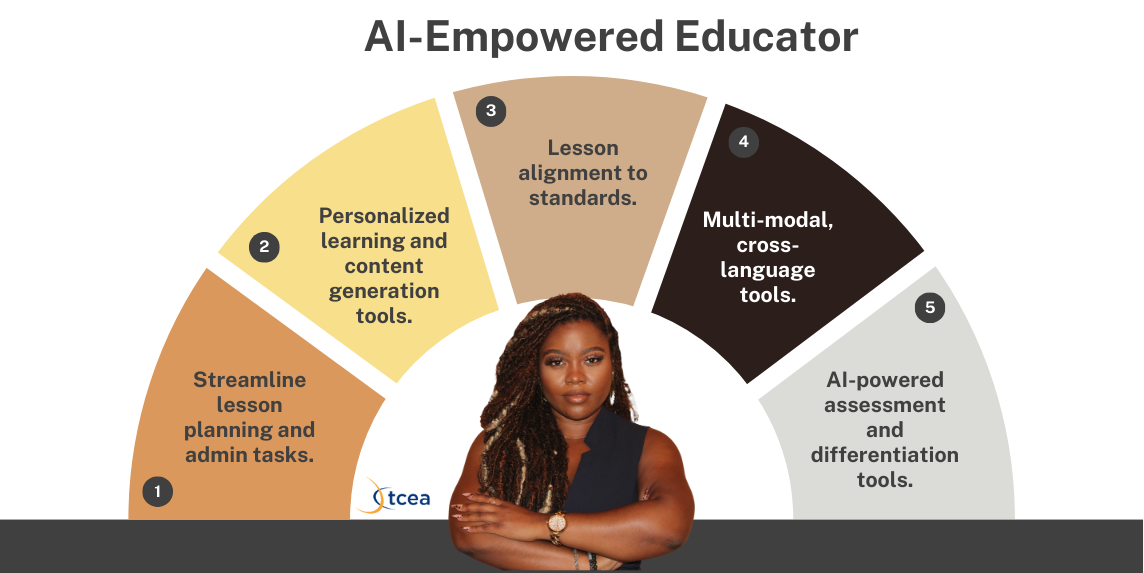
Image created in Canva by author
Discover two top AI tools for teachers: MagicSchool and Eduaide. Explore how they’re alike and different, and see what they can do for you! Are you on the hunt for the perfect AI assistant to lighten your lesson planning load? There are many choices available. Let’s take a look at two exciting AI tools for teacher, Eduaide and MagicSchool. Let’s explore how these platforms can transform the teaching and learning experience.
Prompt Engineering #TCEA #tceajmg #CAPE #RETO
Ready to get started with prompt engineering? Use the handy TCEA Prompt guide. Or, use any of the other assorted prompt engineering acronyms. It’s amazing what AI chatbots can generate when you ask nicely. Learn more about prompt engineering with the Read more link or sign up for TCEA’s ChatGPT for Educator online course.
All were generated using Perplexity ai Pro and/or Claude.ai Pro.
TCEA Prompt Engineering

Examples

RETO Prompt Engineering
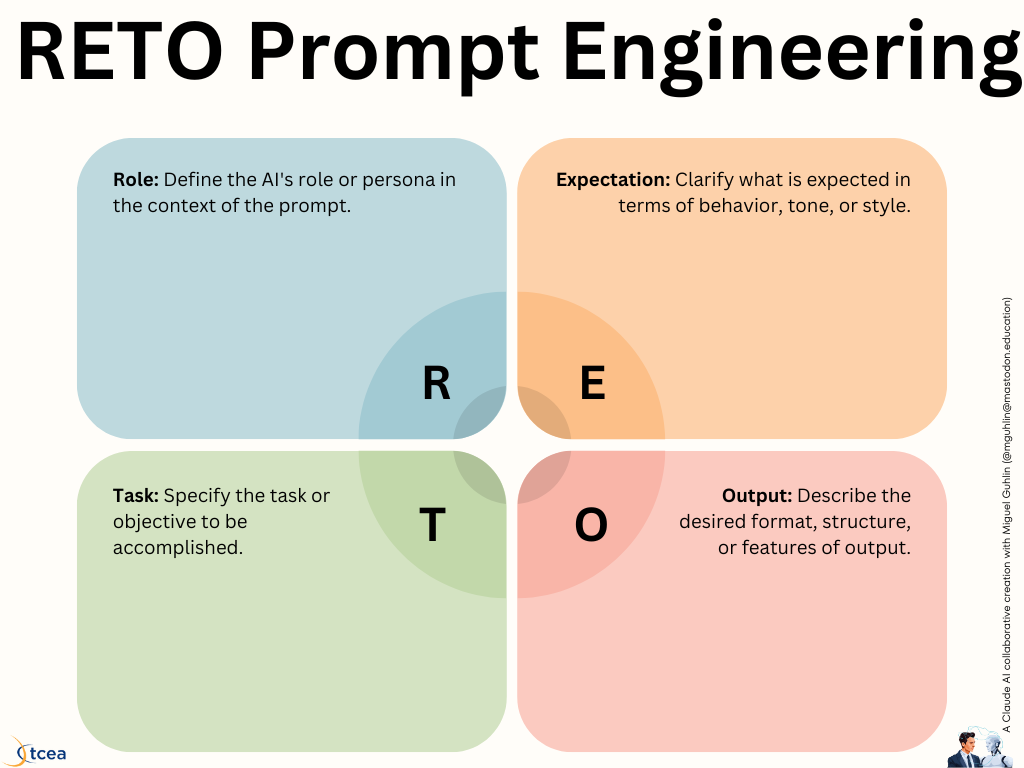
CAPE Prompt Engineering Acronym
